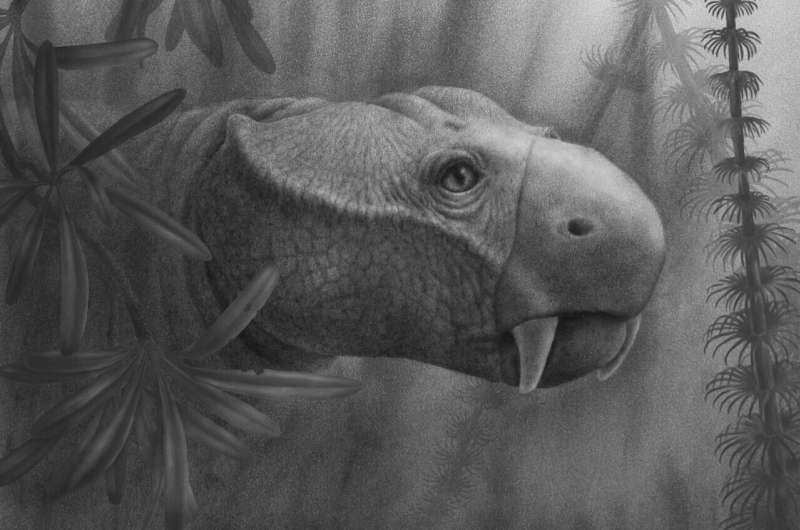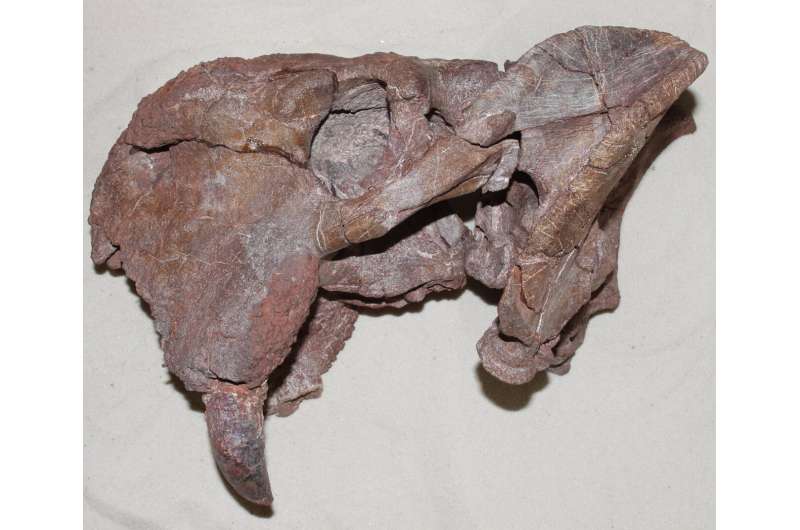Scientists reveal genetic secrets of stress-tolerant mangrove trees
Mangrove trees use changes in gene activity, including the activity of parasitic ‘jumping genes’, to increase their resilience to stress, a new study finds.
IMAGE: (LEFT) MANGROVE TREES GROWING NEAR THE OCEAN EXPERIENCE HIGH LEVELS OF SALINITY AND ARE SMALL IN STATURE. (RIGHT) MANGROVE TREES GROWING UPRIVER HAVE LESS SALINE, BRACKISH CONDITIONS AND GROW TALLER, WITH THICKER TRUNKS AND LARGER LEAVES. THESE TREES WERE SURVEYED BY DR. MATIN MIRYEGANEH (PICTURED) AND HER COLLEAGUES, AS PART OF A NEW STUDY FEATURED IN THE PRESS RELEASE, “SCIENTISTS REVEAL GENETIC SECRETS OF STRESS-TOLERANT MANGROVE TREES.” view more
CREDIT: OIST
- Mangrove trees live in harsh environments and have evolved a remarkable resilience to stres
- Researchers have now decoded the genome of the mangrove tree, Bruguiera gymnorhiza, which contains 309 million base pairs with an estimated 34,403 genes
- The genome is larger than other known mangrove trees, with a quarter of the genome composed of parasite ‘jumping genes’ called transposons
- The researchers also compared gene activity between mangrove trees grown in environments with high salinity to those grown in conditions with low salinity
- Mangrove trees grown in more stressful, high saline conditions suppressed the activity of the transposons and increased the activity of stress-response genes
Mangrove trees straddle the boundary between land and ocean, in harsh environments characterized by rapidly changing levels of salinity and low oxygen. For most plants, these conditions would mark a death sentence, but mangroves have evolved a remarkable resistance to the stresses of these hostile locations.
Now, researchers from the Okinawa Institute of Science and Technology Graduate University (OIST) have decoded the genome of the mangrove tree, Bruguiera gymnorhiza, and revealed how this species regulates its genes in order to cope with stress. Their findings, published recently in New Phytologist, could one day be used to help other plants be more tolerant to stress.
“Mangroves are an ideal model system for studying the molecular mechanism behind stress tolerance, as they naturally cope with various stress factors,” said Dr. Matin Miryeganeh, first author of the study and a researcher in the Plant Epigenetics Unit at OIST.
Mangroves are an important ecosystem for the planet, protecting coastlines from erosion, filtering out pollutants from water and serving as a nursery for fish and other species that support coastal livelihoods. They also play a crucial role in combating global warming, storing up to four times as much carbon in a given area as a rainforest.
Despite their importance, mangroves are being deforested at an unprecedented rate, and due to human pressure and rising seas, are forecast to disappear in as little as 100 years. And genomic resources that could help scientists try to conserve these ecosystems have so far been limited.
The mangrove project, which was initially suggested by Sydney Brenner, one of the founding fathers of OIST, began in 2016, with a survey of mangrove trees in Okinawa. The scientists noticed that the mangrove tree, Bruguiera gymnorhiza, showed striking differences between individuals rooted in the oceanside, with high salinity, and those in the upper riverside, where the waters were more brackish.
“The trees were amazingly different; near the ocean, the height of the trees was about one to two meters, whereas further up the river, the trees grew as high as seven meters,” said senior author, Professor Hidetoshi Saze, who leads the Plant Epigenetics Unit. “But the shorter trees were not unhealthy – they flowered and fruited normally – so we think this modification is adaptive, perhaps allowing the salt-stressed plant to invest more resources into coping with its harsh environment.”
Unlike long-term evolutionary adaptation, which involves changes to the genetic sequence, adaptations to the environment that take place over an organism’s lifespan occur via epigenetic changes. These are chemical modifications to DNA that affect the activity of different genes, adjusting how the genome responds to different environmental stimuli and stresses. Organisms like plants, which can’t move to a more comfortable environment, rely heavily on epigenetic changes to survive.
Before focusing in on how the genome was regulated, the research team first extracted DNA from the mangrove tree, Bruguiera gymnorhiza, and decoded the genome for this species. They found that the genome contained 309 million base pairs, with a predicted 34,403 genes – a much larger genome than those for other known mangrove tree species. The large size was due to, for the most part, almost half of the DNA being made up of repeating sequences.
When the research team examined the type of repetitive DNA, they found that over a quarter of the genome consisted of genetic elements called transposons, or ‘jumping genes.’
Prof. Saze explained: “Active transposons are parasitic genes that can ‘jump’ position within the genome, like cut-and paste or copy-and-paste computer functions. As more copies of themselves are inserted into the genome, repetitive DNA can build up.”
Transposons are a big driver of genome evolution, introducing genetic diversity, but they are a double-edged sword. Disruptions to the genome through the movement of transposons are more likely to cause harm than provide a benefit, particularly when a plant is already stressed, so mangrove trees generally have smaller genomes than other plants, with suppressed transposons.
However, this isn’t the case for Bruguiera gymnorhiza, with the scientists speculating that as this mangrove species is more ancestral than others, it may not have evolved to have an efficient means of suppression.
CAPTION
Researchers from the OIST Plant Epigenetics Unit grew mangrove trees under controlled conditions in the laboratory to see the effect of different salinity levels. Their findings were part of a new study featured in the press release “Scientists reveal genetic secrets of stress-tolerant mangrove trees.”
CREDIT
OIST
The team then examined how activity of the genes, including the transposons, varied between individuals in the oceanside location with high salinity, and individuals in the less saline, brackish waters upriver. They also compared gene activity for mangrove trees grown in the lab, under two different conditions that replicated the oceanside and upriver salinity levels.
Overall, in both the oceanside individuals and those grown in high salinity conditions in the lab, genes involved in suppressing transposon activity showed higher expression, while genes that normally promote transposon activity showed lower expression. In addition, when the team looked specifically into transposons, they found evidence of chemical modifications on their DNA that lowered their activity.
“This shows that an important means of coping with saline stress involves silencing transposons,” said Dr. Miryeganeh.
The researchers also saw increases in the activity of genes involved in stress responses in plants, including those that activate when plants are water-deprived. Gene activity also suggested the stressed plants have lower levels of photosynthesis.
In future research, the team plan to study how seasons, changes in temperature and rainfall, also affect the activity of the mangrove tree genomes.
“This study acts as a foundation, providing new insights into how mangrove trees regulate their genome in response to extreme stresses,” said Prof. Saze. “More research is needed to understand how these changes in gene activity impact molecular processes within the plant cells and tissues and could one day help scientists create new plant strains that can better cope with stress.”
JOURNAL
New Phytologist
METHOD OF RESEARCH
Experimental study
SUBJECT OF RESEARCH
Not applicable
ARTICLE TITLE
De novo genome assembly and in natura epigenomics reveal salinity-induced DNA methylation in the mangrove tree Bruguiera gymnorhiza
ARTICLE PUBLICATION DATE
16-Sep-2021





